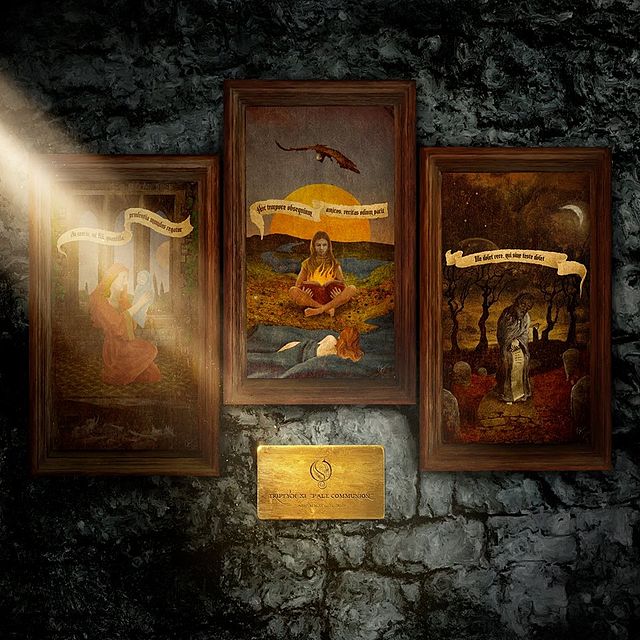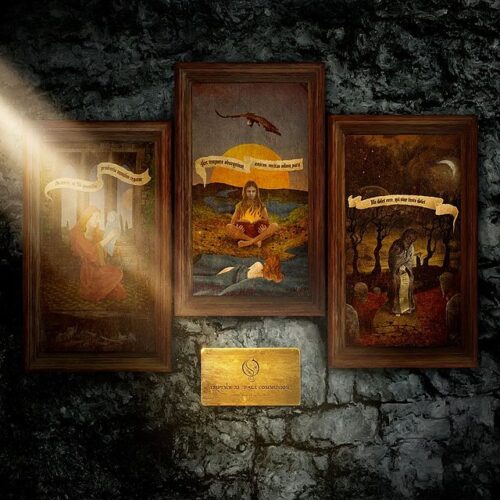From the outset of Opeth’s existence in 1990, the Swedish act defied easy categorisation. Sure, the deep, guttural vocals and dominant riffing style of Opeth’s visionary Mikael Åkerfeldt owed a multitude to malevolent entities such as Morbid Angel, Cannibal Corpse, Deicide or Death, but his ambition for grandeur was heard in compositions as early as those found on their 1995 debut, Orchid. However, it wasn’t until their landmark album Blackwater Park, released in 2001, that Åkerfeldt felt confident enough as a composer to truly expand Opeth’s musical horizons by exploring his love of progressive rock’s nuance, structure and melody, and how to further incorporate same into death metal.
Åkerfeldt’s creative and personal relationship with Porcupine Tree’s Steven Wilson – who acted as an advisor of sorts as well as producer for Blackwater Park – played a key role in giving Åkerfeldt the self-belief in his ability to turn Opeth into whatever vehicle for artistic experimentation he wanted going forward. Further collaborations with Wilson came on Deliverance (2002) and Damnation (2003), and both albums, which were recorded simultaneously but released five months apart, highlighted the growing duality of Opeth’s music. 2005’s Ghost Reveries and 2008’s Watershed followed to further critical acclaim and these albums melded the disparate sides of Opeth – the consuming darkness and the evocative light – with a greater understanding of the equilibrium necessary for both to co-exist. But more importantly, each album also helped prepare staunch metal fans who had followed Opeth for years for the moment that the Stockholm-based band would leave death metal behind.
Released in 2012, Heritage finally cut the bloody and frayed umbilical cord tethering Opeth to the death metal womb of their origins. And although Heritage was audacious in its exclusion of the heavier signatures that made Opeth one of the best death metal bands of all time, the album wasn’t as musically cohesive as it should have been for such a divisive metamorphosis. In hindsight, Heritage was in many ways the formative experiment for what has now crystallised on their 11th studio album, Pale Communion. Pale Communion condenses the true essence of the hard rock and prog influences that have enamoured Åkerfeldt over the years to alchemically forge a sound that can only be described as distinctly Opethian. For one of many instances that bolster this opinion, the sixth song ‘Goblin’ is, as you may infer, heavy on the horror thump of the legendary Italian soundtrack surrealists. Yet this instrumental piece doesn’t sound like Opeth covering Goblin but more like Opeth working with certain Goblinesque sounds – particularly the keyboard work of Joakim Svalberg – while enriching these classic traits with heavy funk grooves which gather greater rhythmic force as the song progresses.
Besides the juddering, growling riffs of ‘Cusp Of Eternity’ there is very little in the way of prototypically "metallic" or "heavy" riffs, which will undoubtedly irk some hopeful fans. The guitars do take a more restrained role throughout Pale Communion, cascading on ‘Eternal Rains Will Come’ and adding dramatic weight to the cinematic closer ‘Faith In Others’; a string-embellished epic which sounds as though it would have fit nicely on the debut of the Åkerfeldt/Wilson project Storm Corrosion. Instead, heaviness is found within the rhythms of drummer Martin "Axe" Axenrot whose dexterous playing style is essential to the album’s grounding. Axenrot was a major acquisition for Opeth when Martin Lopez left in 2006, and his wondrous ability to blast, groove and swing really complimented the aggression (‘Heir Apparent’) and 70s-inspired idiosyncrasies (‘The Lotus Eater’) of his debut recording Watershed; which was also Opeth’s first album with guitarist Fredrik Åkesson who replaced Peter Lindgren. Now that the extremity of Opeth’s music has been dissolved, Axenrot’s focus for Pale Communion has gone into skittering accents and jazzy/funky fills and grooves, but his playing retains the hard-hitting intensity inherit in death metal drumming, especially his governance of ‘Voice Of Treason’; he dictates the direction of this beautifully orchestrated song through an array of power grooves.
While adroit rhythms – including the complimentary interplay between the drums, bass and guitar, not the mention the heavily utilised keyboards – form the foundations of Pale Communion‘s progressive flourishes and supine movements, Åkerfeldt’s vocals are certainly the centre-point. The Swedish maestro has meticulously focused on crafting melodies and layering harmonies for this album, with his delicate falsetto, his greater use of runs and even his emphatic phrasing all working to various emotional releases. The ambitious ‘Moon Above, Sun Below’ moves from hypnotic interplay between the drums, bass, guitars and keyboards to build into a Zeppelin-inspired folk section with Åkerfeldt’s strong vocals emphasised greater in the songwriting, especially during the brilliance of the later multi-part harmony which uses the layering techniques perfected by Queen (incidentally Pale Communion was recorded by Åkerfeldt at Rockfield Studios where Queen recorded A Night At The Opera). There are plenty of tangential turns throughout ‘Moon Above, Sun Below’ – as well as the other seven songs, for that matter – and the transitions are fascinating, coherently arranged and work to the benefit of the song without being prog-excessive.
Vocally and musically, a song such as ‘Elysian Woes’ is also in no way excessive. In part, it is reminiscent of the lauded works of Nick Drake and it would have suited the introspective feel of Damnation, though this primarily acoustic song is more skilfully written and dynamic than anything on that album. Elsewhere, Americana and classic rock are explored on ‘River’. Fleetwood Mac, the Eagles and, as the organ pounds into place later in the song, Uriah Heep or Deep Purple are all points of reference before more menacing motifs are explored through stuttering riffs and searing solos near the song’s conclusion. Again, like ‘Goblin’, none of the sonic comparisons found within those songs make the music sound in any way derivative – which was a huge reason why Heritage faltered – instead they exist uniformly in the utopia of Opeth’s wide-eyed interpretation of hard rock and progressive music.
When creating music, chasing your muse to achieve your own evolved voice is essential. But it’s also quite treacherous (especially in heavily guarded genres like metal) as evolutionary leaps into the unknown never just land in the grey middle ground; you will either rise and soar or crash and burn, depending on the level of exposure of the artist, the execution of the expression, and whether the evolution in sound is gradual or instantaneous. However, the necessary selfishness and the unyielding drive to pursue your aspirations, coupled with the required technical ability to accomplish what you’ve set out to achieve beyond the need for monetary success or the restrictions fans place upon you, can produce greatness once the intent behind the vision is pure. Opeth’s Pale Communion is confirmation of artistic success borne from purity of vision – it is a sublime album of impeccable scope and execution, created by an extremely important band who have finally reached the pinnacle of self-actualisation through music.
<div class="fb-comments" data-href="http://thequietus.com/articles/16057-opeth-pale-communion-review” data-width="550">



